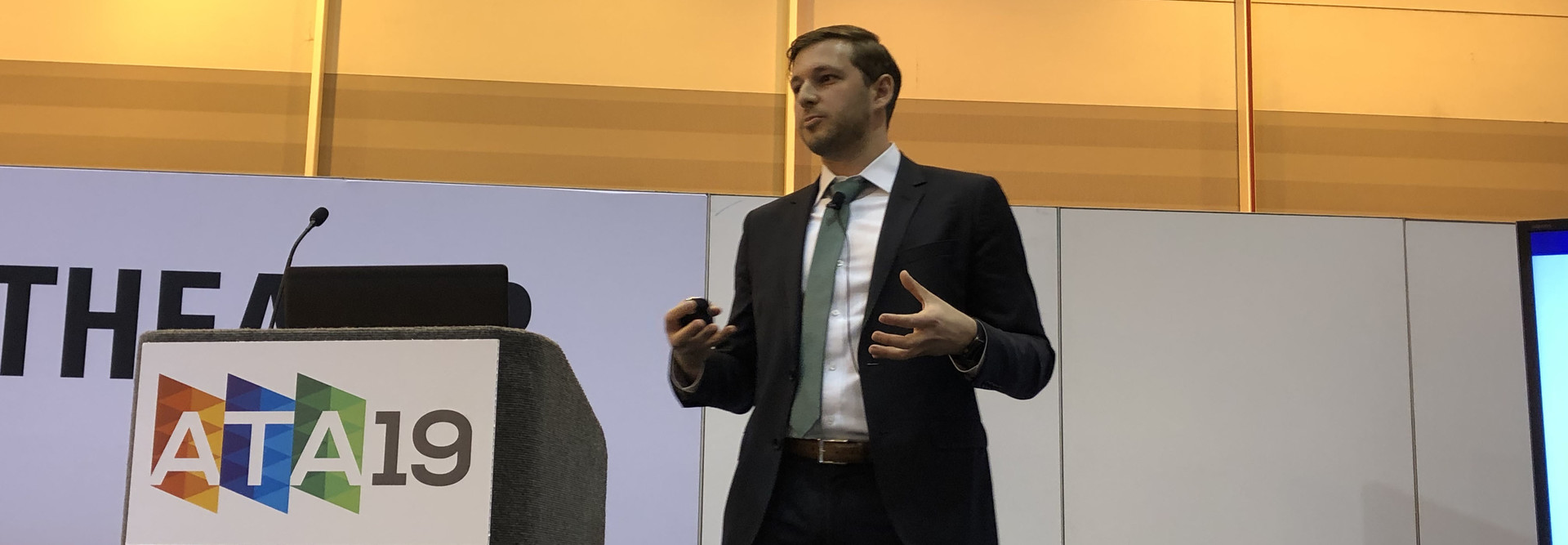ATA19: NYU Langone Health’s Path to Telehealth Success
In standing up its virtual health program, leaders at NYU Langone Health knew they did not want a buffet of various applications and systems overlapping and competing with one another. Healthcare, after all, is a complicated enough endeavor for patients in New York City who want things quickly and efficiently, says Dr. Paul Testa, the organization’s chief medical information officer.
“Getting from Brooklyn by ferry to our mother ship — our main large hospital — that’s like driving across a large state sometimes,” said Testa, speaking Sunday at the American Telemedicine Association’s 2019 conference in New Orleans. “That can be a two- to three-hour proposition. We have a problem with infrastructure in New York City.”
To that end, Testa and others at NYU Langone set out from the get-go to create a centralized programmatic governance within IT that offered a single patient experience.
“We were going to partner with every program that wanted to stick its foot in the water of telemedicine,” Testa said. “We wanted scalable technology; we did not want 17 different vendors.”
A Top-Down Effort Focused on Connecting with Current Patients
The program, which represents a $9 billion entity and 6 million lives, was initiated by NYU Langone’s dean and CEO in March 2016. It required the creation of a virtual health steering board — which meets every other month and consists of leaders throughout the organization, including the chief legal counsel, the head of managed care contracts and many others, who provide insights about different programmatic needs — as well as a workgroup committee, which consists of clinical practice leaders.
By September of that year, a post-emergency department discharge follow-up pilot was launched, and a year later, ED telepsychiatry and virtual urgent care pilots had also been launched.
In January 2019, NYU Langone conducted its 5,000th MyChart video visit.
“It wasn’t so much about looking for new patients as making sure our current patients are serviced in a connected way to their primary care docs, to their surgeons, to their mental health providers.”
JOIN THE CONVERSATION: Follow @CDW_Healthcare on Twitter for continued ATA19 coverage.
Marketing, Quality and Satisfaction Key to Fast Expansion
The setup, which runs through NYU Langone’s Epic electronic health record system, also leverages technology from Cisco and Vidyo. There currently are more than 25 programs live across the health system, Testa said, including transplant post-op video visits, travel medicine video visits and diabetes remote patient monitoring.
What’s more, Testa said, doctors at NYU Langone’s Helen L. and Martin S. Kimmel Pavilion, which opened in 2018, can leverage the system via Samsung tablets and a 75-inch HD display dubbed MyWall to conduct video visits — including discharge visits — with patients.
Jason Sherwin, associate director of virtual health at NYU Langone, said that since January 2017, its virtual health initiative has experienced 23 percent month-over-month growth. Currently, more than 380 providers have telemedicine access.
“It seems like every week we’re adding more docs,” Sherwin said.
A major key to that growth has been the organization’s scaling strategy, which includes gathering a plethora of patient data through surveys about their experiences, as well as marketing to raise awareness about the effort.
“Marketing is huge,” Sherwin said. “We’ve been incredibly lucky to have a strong marketing and communications team that’s helped us.”
Also crucial has been satisfied clinician users sharing their experiences with fellow doctors.
“If you build it, they will not necessarily come,” Sherwin said. “A lot of this is finding your provider evangelist in each of your clinical service lines and working with them to really drive that need and desire among their peers.”
Keep this page bookmarked for articles from the event. Follow us on Twitter @CDW_Healthcare, as well as the official organization account, @AmericanTelemed, and join the conversation using hashtags including #ATA19.









